A standard 1966 dime without a mint mark is worth only 10 cents face value. However, dimes with minting errors can fetch significantly higher prices. Notable examples include an off-center strike selling for over $180, a broad strike error worth $40+, and a major die break (cud) that sold for over $650. Special Mint Set (SMS) coins in premium condition can reach $1,900. Other valuable errors include missing outer layers ($85+) and thick planchets ($50+). To determine accurate value, consult a professional coin appraiser and avoid cleaning the coin, as this causes irreversible damage that decreases its worth substantially.
That Roosevelt dime from 1966 sitting in your change jar might look ordinary, but certain minting errors can transform it from pocket change into a collector’s prize worth hundreds of dollars. While a standard 1966 dime remains at face value, specific striking mistakes and production anomalies have commanded prices exceeding $650 at auction. Understanding which errors to look for could help you identify a valuable piece hiding in plain sight.
Why 1966 Dimes Have No Mint Mark
The 1966 dime represents a unique period in American coinage history. Unlike earlier and later years, all 1966 Roosevelt dimes were struck at the Philadelphia Mint without bearing any mint mark. This wasn’t an error but an intentional design choice by the United States Mint during a transitional period from silver to clad composition coins.
Between 1965 and 1967, the Mint removed mint marks from all circulating coins to discourage hoarding as they phased out silver content. The 1966 dime contains no silver, instead consisting of a copper core sandwiched between copper-nickel alloy layers, weighing the standard 2.27 grams. Over 1.3 billion 1966 dimes were produced, making them extremely common in circulation.
Seven Valuable Error Types to Search For
Off-Center Strike Errors
When a coin blank fails to align properly with the striking dies, the design appears partially off the planchet. A 1966 dime struck 35% off-center sold for $105 at auction, while another with a 25% off-center strike reached $180. The value increases when more of the date remains visible and the off-center percentage is more dramatic. Examples showing 40-50% displacement with full date visibility can command even higher premiums from error collectors.
Broad Strike Mishaps
A broad strike occurs when the collar die that normally contains the metal during striking is absent or malfunctioning. This causes the coin to spread beyond its intended diameter, creating a thinner, wider piece with incomplete or missing reeding on the edge. A 1966 broad strike dime graded Mint State 65 sold for $42. These errors are particularly valued when the coin maintains sharp details despite the expanded diameter, typically measuring 18-19mm instead of the standard 17.9mm.
Major Die Breaks and Cuds
Die breaks happen when a portion of the die cracks or breaks away, causing raised metal blobs on the finished coin. A major die break, called a cud when it occurs at the rim, appears as a raised blank area where design elements are missing. The most significant 1966 dime error on record featured a major obverse die break that sold for $650. The size and location of the cud determine value, with larger breaks affecting major design elements commanding the highest prices.
Missing Outer Layer Defects
Clad coins consist of three bonded metal layers. Manufacturing defects can cause the outer copper-nickel layer to separate from the copper core before or during striking. A 1966 dime missing its obverse outer layer sold for $85. These dramatic errors expose the copper core underneath, creating a distinct two-toned appearance. The missing layer error is particularly valuable when the separation is clean and affects a significant portion of the coin’s surface.
Special Mint Set Premium Specimens
In 1966, the United States Mint produced Special Mint Sets as alternatives to traditional proof sets during the mint mark hiatus. These SMS coins received special handling with higher quality planchets and multiple strikes, resulting in superior luster and detail. A 1966 SMS dime graded MS-68 Ultra Cameo achieved $1,900 at auction. The Ultra Cameo designation indicates deeply frosted devices contrasting against mirror-like fields, a quality highly prized by collectors.
| Grade Level | Standard Dime | SMS Version | Major Die Break |
|---|---|---|---|
| MS-65 | $0.10 | $15-25 | $400-500 |
| MS-67 | $0.10 | $150-250 | $550-650 |
| MS-68 | $0.10 | $1,500-2,000 | $700+ |
Wrong Planchet and Weight Errors
Planchet errors involve coins struck on blanks with incorrect specifications. A 1966 dime weighing 3 grams instead of the standard 2.27 grams sold for $50. This substantial weight difference suggests the coin was struck on a thicker blank intended for a different denomination or prepared incorrectly during the blanking process. Any 1966 dime weighing significantly more or less than 2.27 grams warrants professional examination.
Double Strike Anomalies
Though not mentioned in the primary auction records, double strikes remain among the most sought-after dime errors. These occur when a coin receives two impressions from the dies, either with the second strike overlapping the first at a rotation, or with the coin partially ejected between strikes. While specific 1966 examples weren’t documented in recent sales data, similar double strike Roosevelt dimes from the era have sold for $75-200 depending on the displacement visibility.
Proper Authentication Methods
Professional grading services like PCGS and NGC provide authentication and encapsulation services that verify error coins and assign condition grades. Certification costs typically range from $20-50 depending on service tier and turnaround time, but this investment protects against counterfeits and provides standardized condition assessment that buyers trust.
When examining a potential error yourself, use proper lighting and magnification of at least 5x to identify subtle anomalies. Compare your coin against images of confirmed examples from auction archives at Heritage Auctions or eBay sold listings. Document your findings with clear photographs showing the error from multiple angles before seeking professional opinion.
Preservation Best Practices
Never attempt to clean a potentially valuable error coin. Cleaning causes microscopic scratches that diminish value, sometimes by 50% or more even when the error itself remains intact. Coin experts universally recommend against any cleaning method, including soap, water, baking soda, or commercial cleaners. Surface dirt and toning often indicate originality that collectors prefer over artificial brightness.
Store coins individually in non-PVC holders specifically designed for numismatic preservation. PVC-containing flips can cause green corrosion over time that permanently damages the surface. Handle coins by their edges only, never touching the obverse or reverse faces, as skin oils contain acids that promote tarnishing and corrosion over months and years.
Where to Sell Valuable Error Coins
Auction houses specializing in error coins provide the broadest buyer reach. Heritage Auctions, Stack’s Bowers, and Great Collections regularly feature error coins in their sales, charging seller’s fees typically between 10-20% of the hammer price. For errors valued above $500, consignment to a major auction maximizes exposure to serious collectors willing to pay premium prices.
Online marketplaces like eBay offer faster sales but require careful listing practices. Include detailed photographs, accurate descriptions using proper numismatic terminology, and transparent return policies to build buyer confidence. Completed listings for similar errors provide realistic pricing guidance. For errors valued under $100, direct online sales often net better returns than auction house consignment after fees.
Local coin dealers offer immediate payment but typically pay wholesale prices of 50-70% of retail value. This option works best when you need quick liquidity or lack time to pursue auction consignment. Always obtain quotes from multiple dealers before accepting any offer, as knowledge and interest levels vary significantly among local shops.
Building Your Error Coin Collection Strategy
Start by searching rolls of dimes from your bank or credit union. A $5 roll contains 50 dimes, providing reasonable odds of finding minor errors like small die cracks or light off-center strikes. While major errors remain rare, the minimal investment makes roll searching an accessible entry point into error collecting.
Join online communities focused on error coins, such as Coin Community Forum or the Error Coin section of Collectors Universe. These communities share recent finds, provide identification assistance, and offer marketplace opportunities among fellow enthusiasts. Learning from experienced collectors accelerates your ability to spot valuable errors and avoid common misidentifications.
Consider specializing in specific error types rather than pursuing every variety. Focused collections often appreciate more significantly than scattered accumulations because serious collectors pay premiums for comprehensive type sets. Whether you choose off-center strikes, die breaks, or planchet errors, depth of knowledge in your specialty improves both acquisition and eventual sale outcomes.
You may be interested:
- 1859 Indian Head Penny Coin Value Complete Errors List And No Mint Mark Worth Guide For Collectors
- 1911 V Nickel Coin Value Guide Complete Errors List And No Mint Mark Worth Today
- 1902 Dime Coin Value Complete Errors List With O S And No Mint Mark Worth Guide
- 1788 Quarter Coin Value Complete Guide Errors List And D S P Mint Mark Worth Revealed
- 1776 To 1976 Bicentennial Half Dollar Coin Value Complete Errors List And What Your D S And No Mint Mark Coins Are Actually Worth
- 1990 Penny Coin Value Errors List How D S And No Mint Mark Pennies Are Worth Thousands Of Dollars

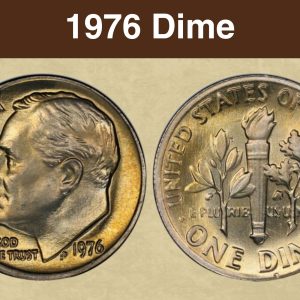
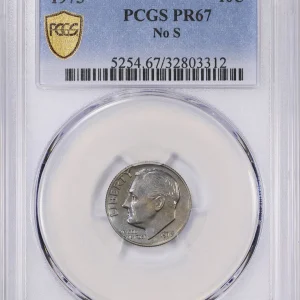
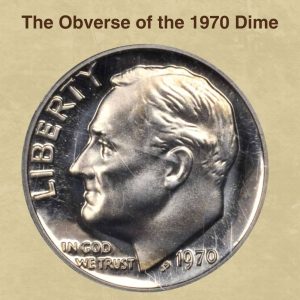
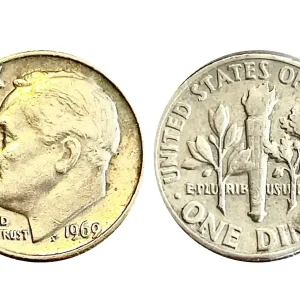
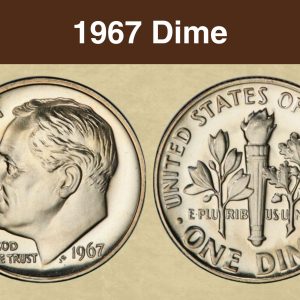
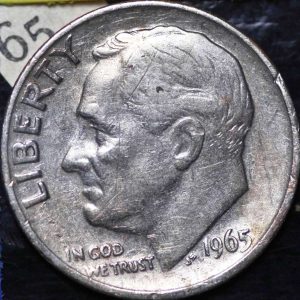
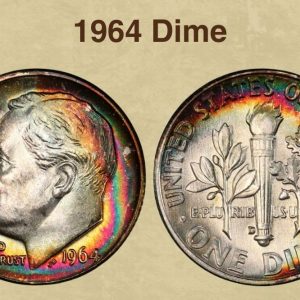
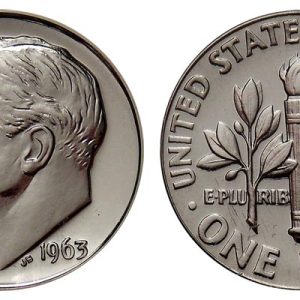
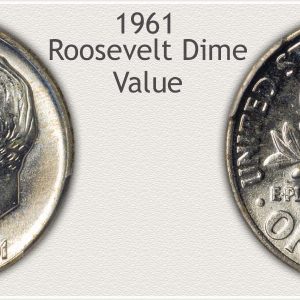
Is a 1966 dime with no mint mark worth anything?
A 1966 dime with no mint mark is generally worth its face value of 10 cents unless it is in uncirculated condition or has a rare mint error. In uncirculated condition, its value starts around a few dollars, while coins with significant errors like die breaks or off-center strikes can be worth much more, potentially hundreds or even thousands of dollars.
What are the errors on a 1966 dime?
Common 1966 dime errors include broad strikes, die breaks, and off-center strikes. Other unique errors found on 1966 dimes are missing outer layers, a “5 on the cheek” error, or distorted lettering, particularly a missing “WE” in “IN GOD WE TRUST”. The value of a 1966 error dime depends on the specific error’s severity, the coin’s condition, and its rarity.
Which dimes with no mint mark are worth money?
Dimes with no mint mark can be valuable if they are 1968-S No-S Proof, 1970-S No-S Proof, or 1982 No-S business strike Roosevelt Dimes, as these are rare error coins. However, most dimes from 1965–1967 lack a mint mark because it was deliberately removed from coins at the time, making them very common and not valuable beyond their face value.
What year is the $2000000 dime?
1894-S Barber dime. The 1894-S Barber dime is a dime produced in the United States Barber coinage. It is one of the rarest and most highly prized United States coins for collectors, along with the 1804 dollar and the 1913 Liberty Head nickel.